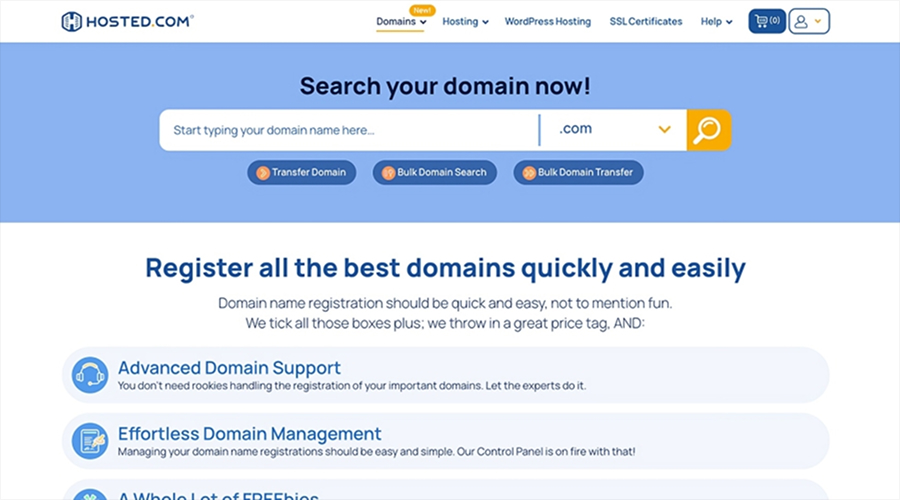
In today’s digital world, having a strong online presence is no longer optional. It’s the foundation that helps your startup reach new customers, attract investors, and stand out from competitors. With the right steps, you can create visibility, build trust, and open the door to long-term growth. This handy guide provides practical tips to help you do just that.
TIP 1: Build a Professional Website as Your Digital Base
Every business needs a home online, and that’s your website. For startups, it’s the first impression people get when they want to know more about you. Your website should load quickly, look good on mobile, and be easy to navigate. Don’t forget security. An SSL certificate is a necessity, as it protects visitors and builds trust.
You don’t need to overcomplicate things in the beginning. For example, you can use a platform like WordPress or a website builder to launch quickly and keep costs down. As your business grows, you can expand features and design to reflect your goals and audience better.
TIP 2: Choose the Right Domain Name

Your domain name is part of your identity. A short, clear, and memorable domain builds credibility and makes it easier for people to find you. Ensure it reflects your brand and isn’t confusing to spell. It’s also smart to search for an available domain early so you can secure the best option before someone else does. Locking it in at the start is one of the simplest ways to support your future growth.
TIP 3: Optimize for Search Engines
Even the best website won’t do much if people can’t find it. That’s where SEO comes in. Start with the basics:
- Write clear meta titles and descriptions.
- Include related keywords that match what your audience is searching for.
- Ensure your website looks good on mobile devices.
Focus on creating content that directly responds to the questions your customers are asking. Over time, this builds authority and helps you appear higher in search results. A little consistency here goes a long way toward helping you build a strong brand online.
Also Read: SEO Hull Checklist: Essential Steps To Rank Higher In 2025
TIP 4: Use Social Media to Build Brand Awareness

Social media is one of the easiest ways for startups to connect with people. The key is choosing the platforms your target audience uses. LinkedIn may be excellent for B2B companies, while Instagram could be better for visual-driven products.
When using social media, posting consistently matters more than posting everywhere. Share updates, behind-the-scenes stories, or even quick tips related to your industry. Engage with comments and questions; these small interactions can make your brand more trustworthy and relatable.
Also read: How to Build a Brand using Social Media Branding Strategy?
TIP 5: Create Valuable Content that Educates & Engages
Content is one of the best ways to build a strong brand while attracting the right audience. Blogs, short videos, and case studies are affordable formats that startups can use effectively. The goal isn’t to sell immediately, but to provide value, answer questions, and show expertise.
When resources are limited, focus on quality over quantity. Even one well-written blog each month or a weekly short video can set your startup apart. Plan content around common customer challenges so your solutions stand out naturally.
Also Read: Tips for Making Your Website Content More Interactive
TIP 6: Use Online Directories & Business Listings
Startups often overlook this step, but online directories and listings can be powerful. Creating a Google Business Profile helps you appear in local SERPs (search engine result pages) and maps, which is especially useful for attracting nearby customers.
Being listed in trusted industry directories also increases credibility. Don’t forget to motivate satisfied customers to leave reviews, because positive ratings go a long way towards building trust with people who are hearing about your startup for the first time.
TIP 7: Invest in Email Marketing Early
Email is one of the most effective marketing tools, and it’s wise for startups to begin building a list from day one. Unlike social media, where algorithms decide who sees your videos or posts, email provides you with direct access to your audience.
You don’t need expensive tools to get started. Many beginner-friendly platforms let you create sign-up forms, automate emails, and send newsletters. By sharing updates and offers directly, you keep your brand fresh in people’s minds and increase conversions over time.
Also Read: How to Create Successful Email Marketing Campaigns: A Step-by-Step Guide
TIP 8: Track, Measure, & Improve with Analytics
One mistake many startups often make is guessing what works without tracking results. Analytics tools, including Google Analytics, help you see where your traffic comes from, which content performs best, and where visitors drop off.
Paying attention to these numbers lets you refine your strategy. Instead of wasting time on what doesn’t work, you can double down on the tactics that bring results. Even small adjustments based on data can create steady growth over time.
Conclusion
Building an online presence takes patience, but the payoff is worth it. From setting up your website and securing the right domain to creating content, using social media, and tracking results, every step plays a role in helping your startup succeed. So, stay consistent, keep learning, and focus on building a strong brand that connects with people. With time and effort, your online presence will become a powerful driver for growth.zZz






